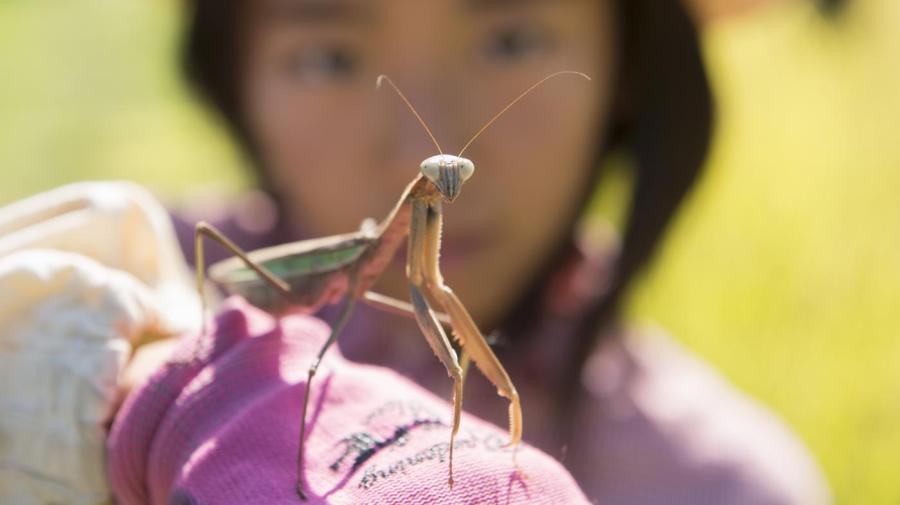What Is a Giant Asian Praying Mantis?

The Giant Asian praying mantis, also known as Hierodula membranacea, is a large winged insect of the mantidae animal family. Males can grow to be 3 inches long, whereas females can reach closer to 3.5 inches. The reference to praying in the mantis’ name describes the positioning of the front limbs on the insect, rather than the carnivorous characteristics of the animal.
The Giant Asian mantis actively hunts its prey rather than lying in ambush. Adult Giant Asian mantises will generally eat anything that is half their size or smaller. However, some Giant Asian mantises have been known to attack animals that are comparable in size to the insect, such as smaller amphibians and rodents.
Giant Asian mantises have no venom that can be used to subdue their prey; however, their long front legs have spikes that can be used to skewer their prey and immobilize it. Once a Giant Asian mantis has trapped its prey in such a manner, it will usually bite the victim’s head off before beginning its meal.
The Giant Asian mantis has been known to exhibit cannibalistic tendencies, especially between newborn mantis nymphs and between the adult females and males once breeding and egg laying has been completed.





